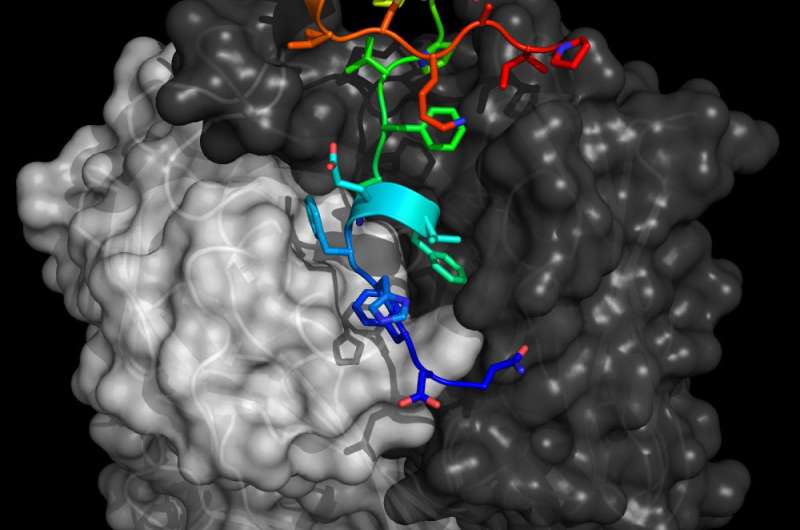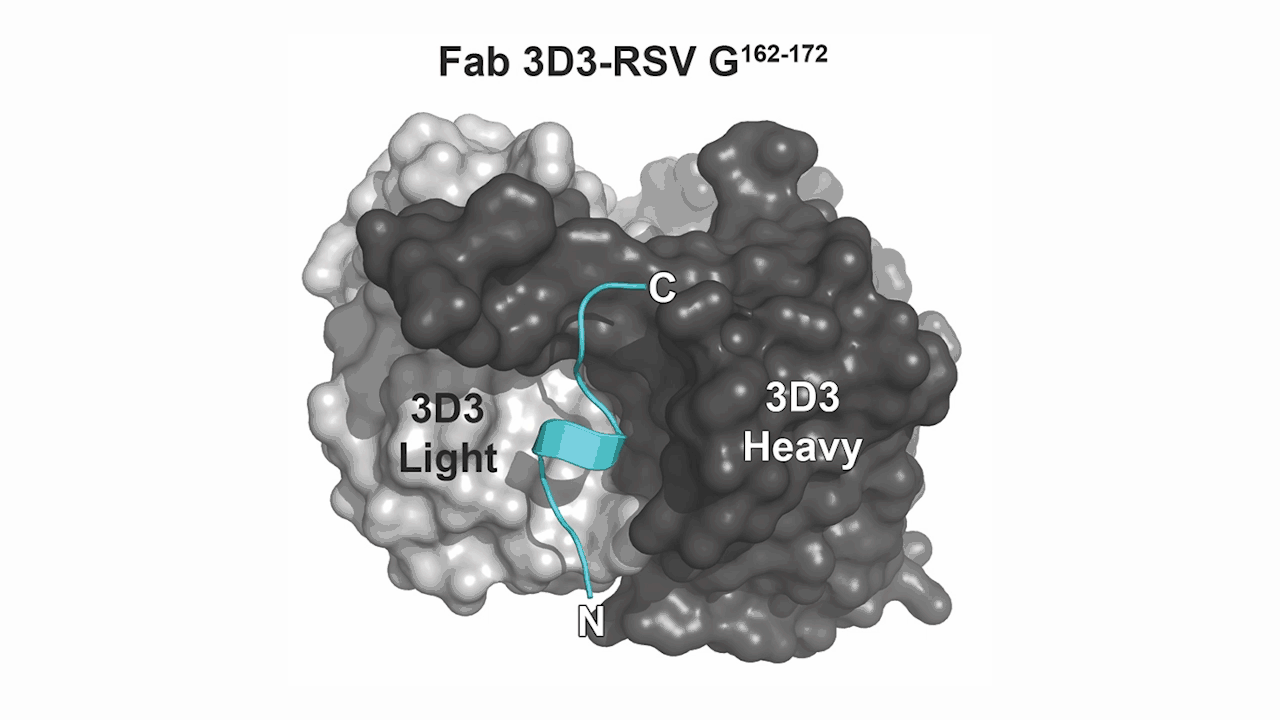Antigen study supports new approach to vaccine for respiratory syncytial virus

Medical researchers have been trying to develop a vaccine for respiratory syncytial virus (RSV) for more than 50 years, without success. New findings by researchers at UC Santa Cruz, however, point to a promising route for designing an effective vaccine.
For most people, an RSV infection is just a bad cold, but for infants and older adults it can cause serious pneumonia or bronchial inflammation. In the 1960s, a traditional vaccine based on inactivated virus was found to actually make the disease worse. More recently, clinical trials of two different vaccines based on one of the viral surface proteins (the RSV F glycoprotein) have also failed.
The new study, published March 9 in Science Immunology, focused on the other major viral surface protein, the RSV G glycoprotein. Leveraging work by collaborators at Trellis Bioscience who have isolated protective human antibodies targeting the G glycoprotein, the UCSC researchers determined the atomic structure of RSV G and identified two sites on it that are targeted by protective antibodies effective against a broad range of RSV strains.
Corresponding author Rebecca DuBois, assistant professor of biomolecular engineering at UC Santa Cruz, said RSV G had been overlooked by vaccine researchers because initial studies found that deleting the gene for it didn't stop the virus from replicating in cell cultures. Studies in animal models, however, showed that virus lacking the G glycoprotein is significantly weakened.

"The G glycoprotein is actually very important," DuBois said. "It's the attachment protein that allows the virus to stick to lung cells, while the F glycoprotein promotes entry into the cell. Once the virus infects a cell and starts replicating, it makes a secreted form of the G glycoprotein that goes out and starts flipping switches on our immune cells, distorting our immune responses."
This disruption of the immune response by RSV G may explain why vaccines based on RSV F have failed, she said. "You need a protective antibody response that blocks that RSV G activity, but we didn't know how antibodies target RSV G at the molecular level."
In the new study, DuBois showed that these protective antibodies target a section of the protein called the central conserved domain that is the same in all strains of the virus. The researchers determined the three-dimensional atomic structures of the precise binding sites of two Trellis antibodies—crucial information for designing a vaccine that can induce the immune system to produce such protective antibodies.
"We're really excited about the possibility of finally being able to conquer this virus, which is one of the most important childhood viruses for which we don't have a vaccine," DuBois said.
In developing a vaccine based on RSV G, however, researchers would have to ensure that the vaccine lacks the viral protein's ability to disrupt the immune system. "There has been a lot of concern about making a vaccine with the G glycoprotein. We need to engineer it so that it can't subvert the immune system, while keeping its ability to elicit an effective antibody response," DuBois said.
Trellis Bioscience, meanwhile, is investigating the therapeutic use of the antibodies themselves to treat infants with RSV infection and severe lung congestion, with clinical trials expected to start in early 2019. If proven effective, the demand for a vaccine that elicits protective antibodies targeting the G glycoprotein will intensify, particularly for global use, DuBois said.
More information: S.O. Fedechkin el al., "Structures of respiratory syncytial virus G antigen bound to broadly neutralizing antibodies," Science Immunology (2018). immunology.sciencemag.org/look … 6/sciimmunol.aar3534




















